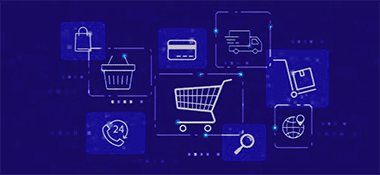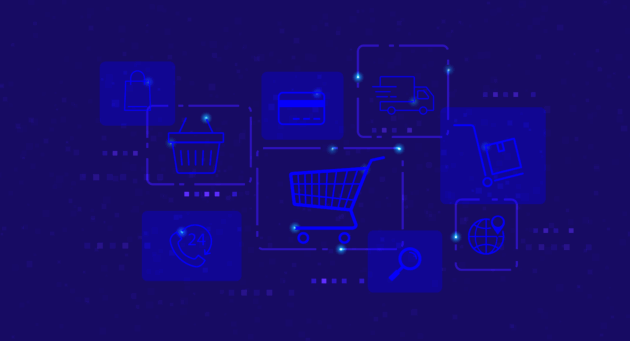The panic surrounding the “cookiepocalypse” reminds me of the Y2K scare when everyone thought a computer bug would break the digital systems that controlled everything from banking to air travel, nuclear energy management, and more. But one big difference between Y2K and the third-party cookie countdown is that the former ended up having little impact in the end, while the cookiepocalypse will be the real Y2K for marketers and media owners by completely disrupting the fundamentals of the online ecosystem.
For digital advertising in particular, this change will have real and pervasive consequences affecting the whole of the advertising industry. And unlike with Y2K, we know what’s at stake if we don’t prepare now — and the consequences are dire. For marketers, repercussions will include loss of personalization, limited addressability, ineffectual optimization, little to no visibility into the consumer journey, and fragmented, inaccurate measurement. Media owners face massive cuts to their revenue stream by losing the ability to both understand their audiences and create the types of quality experiences they offer today.
But if the advertising industry can avoid an actual Y2K-like catastrophe by addressing these implications and seamlessly substituting the positive contributions of the third-party cookie, this will signal a more privacy-safe chapter in its evolution. It will ensure an equal value exchange between consumers and the marketers and media owners they care about, while giving them more transparency and control over their data preferences. In other words, it’s a chance for all players in the ecosystem to get it right and usher in the next evolution of the internet
Google recently extended the cookie deprecation timeline to late 2023, and while the extra time is necessary, it doesn’t mean that this becomes “tomorrow’s problem.” This is today’s chance to prepare and create a strong foundation for the new era of digital advertising.
As we look towards the next two years, we’re guided by our vision of bringing richer experiences to every consumer. This includes helping consumers take control and feel comfortable with how their data is shared, with whom, and for the return value of choice, quality content, and flexibility. In that spirit, here are three ways marketers can prepare now to avoid another Y2K-esque panic with the final cookie countdown:
1. Build your first-party data strategy
First-party data is the information that you, as a marketer or media owner, receive directly from the consumers you have relationships with. These consumers have opted in to share their data with you, and in exchange, you’re able to reach them with personalized ads, product recommendations, site experiences, and messaging.
While first-party data has always been important, it’ll become even more crucial to help marketers understand each person’s commerce journey once third-party cookies are gone, since you’ll need alternative ways to reach and find consumers online. And media owners will need first-party data to ensure continued monetization and exceptional user experiences on your sites.
Our answer to this new era of programmatic advertising, for both marketers and media owners, is the First-Party Media Network, which recently won the 2021 Digiday Media award for Best First-Party Data Strategy. This network is built on a combination of deep and direct demand and supply-side integrations, as well as unparalleled commerce data and advanced AI to activate holistic audience strategies and generate measurable commerce outcomes.
2. Get ahead of further identity changes
While growing your own first-party data is important, you will generate the greatest value by enriching it through the First-Party Media Network, enabling connections across durable identifiers that will be insulated from further identity updates. Such IDs include first-party anonymous IDs, hashed emails, encrypted phone numbers, postal codes, household IDs, and data passed from third-party identifiers such as RampID, netID, and Unified ID 2.0.
You can also build your identity foundation by testing single-sign-on (SSO) solutions, such as OpenPass, which help consumers opt-in (or out) of sharing their data with marketers and media owners. OpenPass is used to reach logged in consumers, as well as unlogged consumers across the open internet. It was developed as an open-source solution, making it available to the industry at large through prebid.org. It aims to create richer experiences, even for unlogged consumers who opt into lighter personalization preferences, by still showing them great ads, offers, and content without hitting paywalls or newsletters.
3. Grow your incremental audience
On an ongoing basis between now and when third-party cookies are deprecated, it’s also important to test alternative identity and targeting solutions that meet your advertising goals as well as reach new audiences. Marketers and media owners alike have a unique opportunity now, while third-party cookies are still in use, to know what the post-cookie future will look like.
Ways to do this include testing cookie-agnostic solutions via one-to-one addressable targeting, as well as cohort and contextual offerings. You can also share customer attributes and in-store purchase data to further optimize campaigns to your best potential customers with lookalike modeling with omnichannel solutions. By implementing these preparatory changes today and testing new in-market solutions, you can learn more now and set your strategies accordingly.
Next steps towards third-party cookie independence
With building a strong first-party data strategy being top of mind for marketers and media owners, you can get started by beginning to pass your first-party data into the First-Party Media Network. You can also put your data into action and use contextual, cohort, and omnichannel campaigns to find new users, which will help expand your first-party audiences now, before third-party cookies are gone.
Make no mistake, the Y2K-level panic is warranted in this case, but there is opportunity to adapt today to unlock competitive advantages that future-proof your business and delight your consumers with increased relevancy in a privacy-safe manner.
Speak to a Criteo expert today about how to onboard your data into the First-Party Media Network to thrive in a post-cookie world.
















